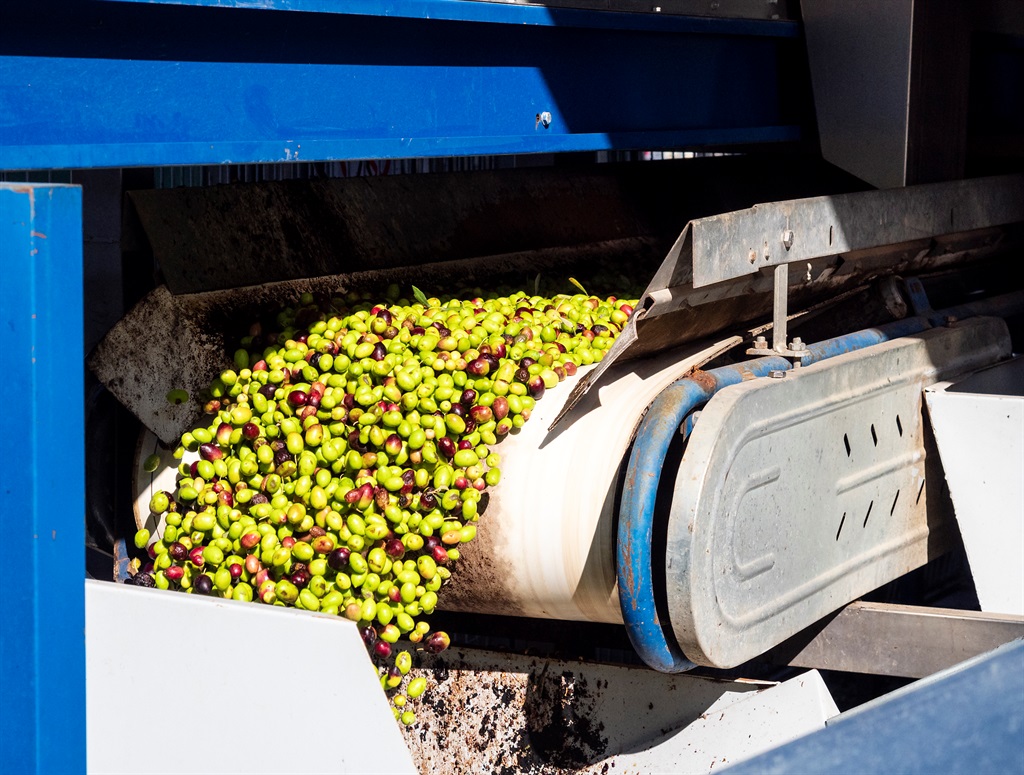Machine during the process of manufacturing oil in an oil mill. (Image: Getty)
- The olive industry expects to produce favourable olive oil and table olive volumes – but that will not translate into more attractive prices for the consumer.
- The bountiful harvest is offset by the rising agricultural costs such as fuel, electricity, labour, and fertiliser.
- In the Overberg region, growers experienced favourable weather, while the Klein Karoo had bad weather.
- The industry body SA Olive said demand will continue to outrun local supply.
- For more stories, go to www.BusinessInsider.co.za.
South Africa’s olive growers had a bountiful harvest this year, but that won’t necessarily translate to lower prices of olive oil and table olives for consumers, with farmers seeing steep increases in some input costs.
For the most part, the olive industry had a season marked by favourable weather conditions in key growing regions such as Overberg, which contributed to its exceptional harvest volumes and, in some cases, led to better quality olive oil with more distinct characteristics.
But higher prices in critical agricultural inputs are putting pressure on olive oil pricing in turn, Vittoria Jooste, CEO of SA Olive, the country’s industry body for the crop, said.
“[The] pricing of olive oil remains under pressure due to rising input costs, such as electricity, fuel, fertilisers, and labour,” Jooste said.
In the Klein Karoo region, olive farmers had unfavourable weather, resulting in a smaller crop than farmers elsewhere.
“Contributing to the low yield have been many factors apart from the weather, such as increased costs for fuel, water, fertiliser, and labour,” SA Olive said.
It said many affected farmers would be unable to export their products and would be forced to focus on the domestic market.
On the Kloovenburg Wine and Olive Estate in Kasteel, increased fuel costs and frequent load shedding massively hampered operations, André Conradie, olive factory manager, said.
Over the past two years, local farmers produced between 1.6 million litres to 1.7 million litres of extra virgin olive oil, and they expect that volumes will be similar this year, despite variations across South Africa’s key olive growing regions.
“This year’s bumper crop (in terms of olives harvested) will not result in substantially increased olive oil production, due to the oil yield being moderate… We are not expecting an oversupply and demand of olive oil will continue to exceed local supply,” Jooste said.
The industry grows 95% of its olives in the Western Cape and grows the rest in the Eastern Cape, Free State, and Limpopo.
According to Olive SA, olive farming is growing by a minimum of 20% per year and is doubling in size every four to five years – making olives the fastest growing agricultural sub-sector
It produces 1,400 tons of olives, while South Africa imports the same volumes from Spain, Italy, Portugal, and Greece.
About 90% of locally produced olive oil is consumed locally. Exports are mainly destined for Botswana and Namibia.














 (2025 Updated)
(2025 Updated)





Discussion about this post